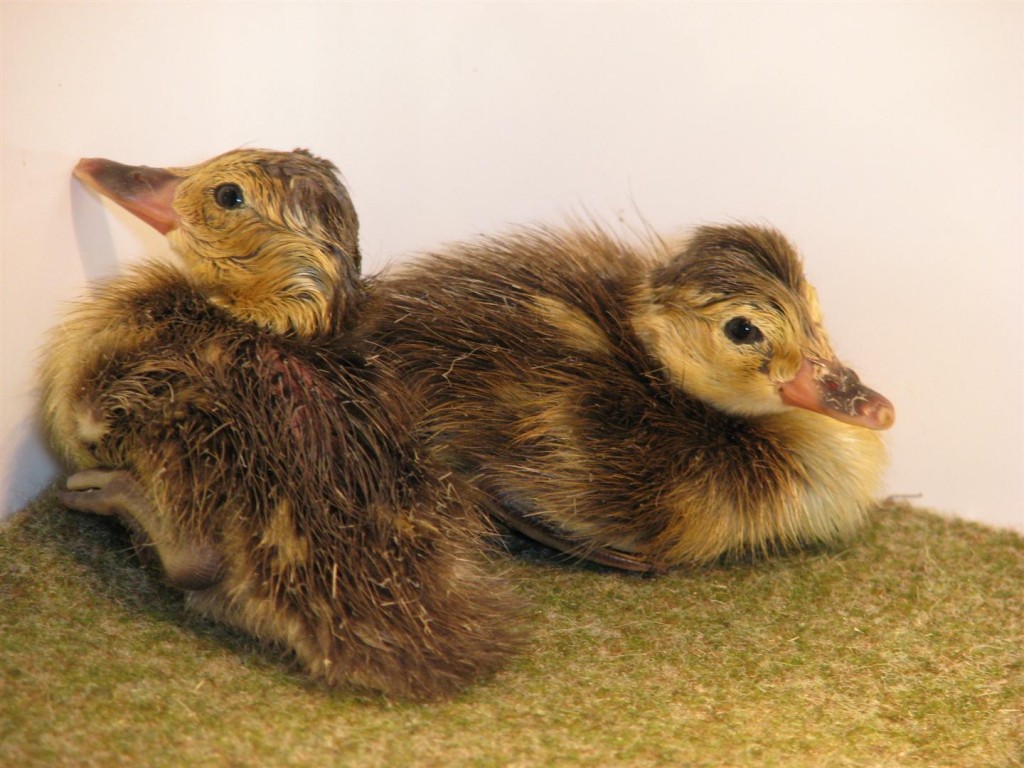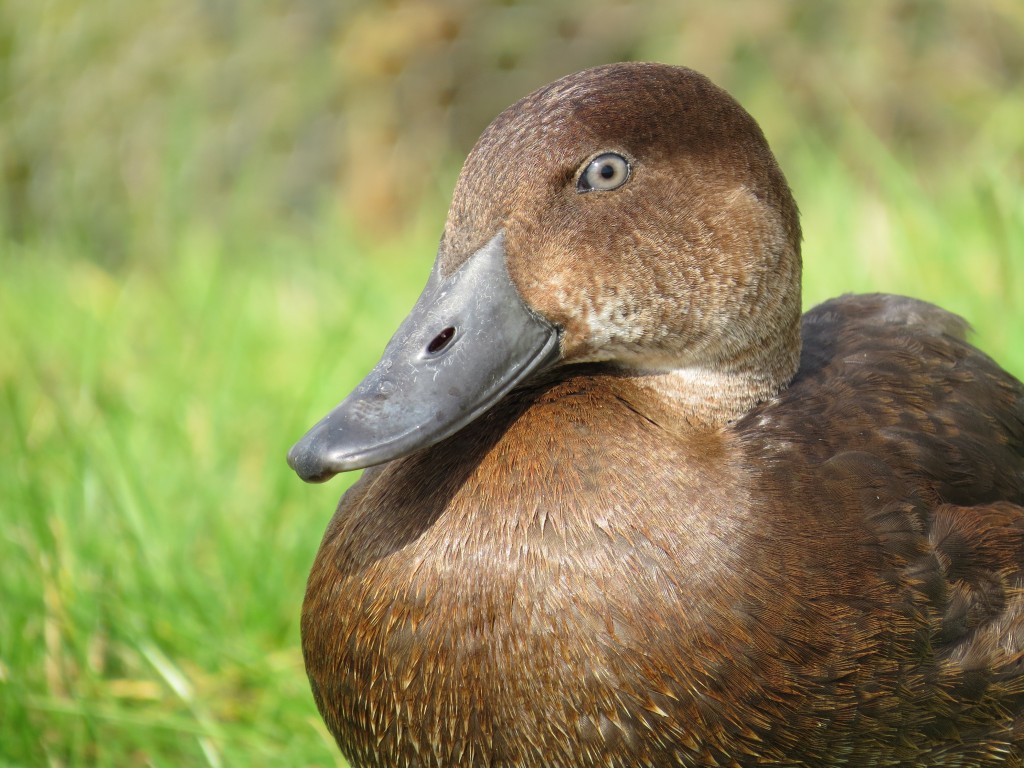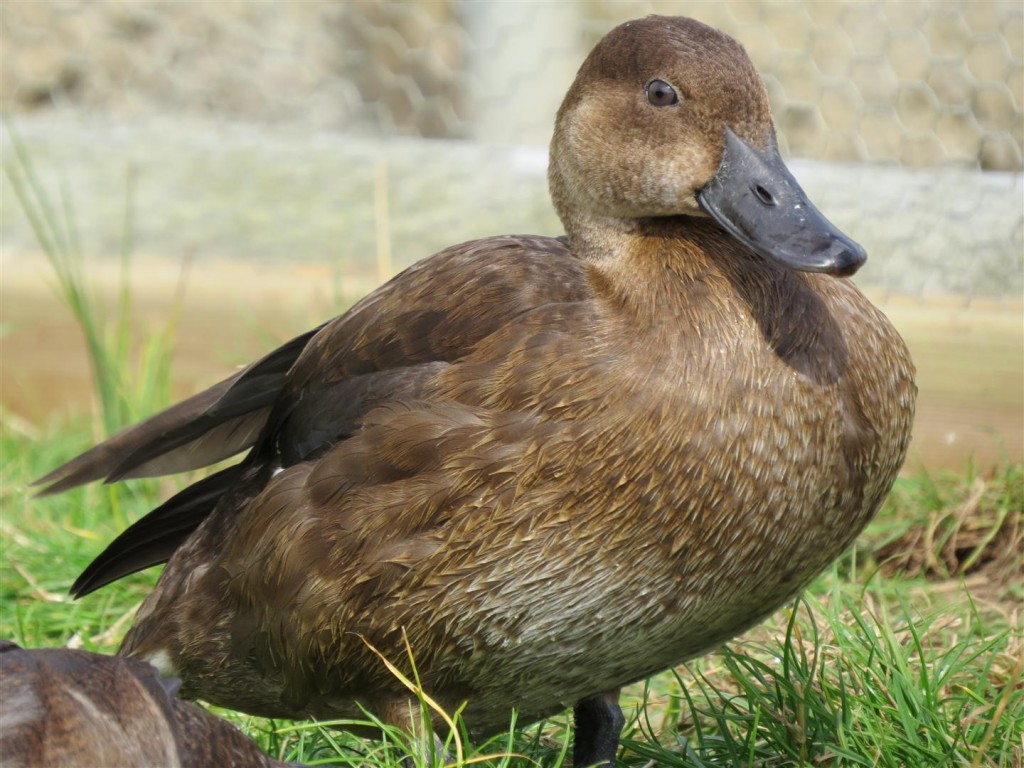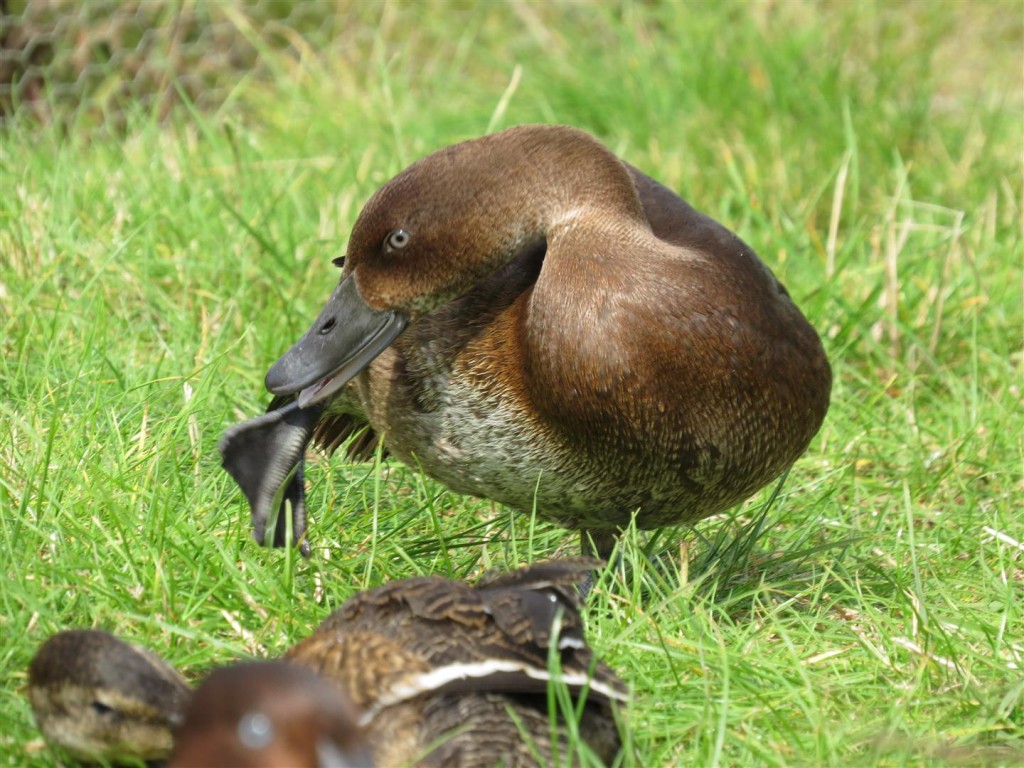Hardheads in the Duckery.
A little insight into the Australian white-eye or Hardhead today.
Possibly one of the most overlooked species at WWT due to its residency within the Australian exhibit which must surely contain some of the weirdest and wackiest of all the wildfowl...
It does appear however that the World's pochard species appear to be a common indicator of habitat decline, possibly due to the nature of how they occupy wetlands. With the Baers pochard and Madagascan pochard currently considered Endagered AND the Ferruginous pochard now in decline, the diving dabbling ducks of this world are showing us something.
It makes sense then, to give them a bit of airtime...

At WWT Slimbridge we breed a handful of Australian white-eye each year in order to keep the age structure of the group healthy for the future. You can quite clearly see how bright yellow the ducklings are, and in fact are distinct from all other pochard ducklings by their dark blonde backs. Baers, Ferruginous, and Madagascan are all nearly dark chocolate brown in comparison.
They are rapid growers, and as streamlined as all pochard are at a young age. They exhibit constant natural instinct, and are very satisfying to rear due to their tendency to self-entertain. Other diving ducks such as the sawbills and seaducks tend to become frustrated in still water or shallow water, but an aythya is more than capable of making their juvenile habitat fun! They will run at full pelt across a grassy paddock after a butterfly or insect, and will gladly take a tumble in their pursuit. They will also spend tens of minutes diving as a group, churning their legs in a circular motion to keep them underwater as they dabble amongst the cracks in the concrete. Some days it looks like they're trying to create a jacuzzi! It can be very satisfying for them if we feed deep in the water in order to encourage this behaviour. It is of course sensible to ensure that they have a supplementary feed source in case a certain member of the brood is not up to it...

This handsome pair were the only fertile eggs to come from our breeding pair of Hardheads this season. The breeding male proved to be an older bird, but his limited fertility has definitely not impacted on the quality of his progeny... These two little Australians are absolutely wonderful. Plump, bright-eyed and bushy-tailed, they are already beginning to change into their adult plumage. The most distinctive change is their eyes, as the male is already showing his distinct white-eyed character whilst the female retains her juvenile brown. They are still the palest of the pochard, a lovely honey brown...

At WWT we place a metal ring on the legs of all of our wildfowl for identification purposes. These are put on using circlip pliers and contain a unique identification code and our address. They are placed on the right for males, and left for females. The metal is designed to withstand wear, tear and erosion fo the best part of the life of the bird, up to 10 years on average. They are specifically sized and shaped to have minimal impact on the bird, and whilst they give it a customary nibble for a few days post-ringing; they soon forget they are even wearing it...
These two will be introduced into the Australian exhibit come spring, and will be a lovely addition to the age structure. They have been photographed so as to remain fresh in our minds, and their rearing documented for the future. Every bird bred is a lesson learned for conservation.


